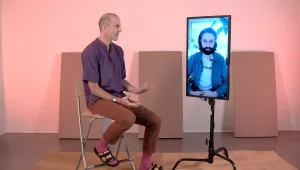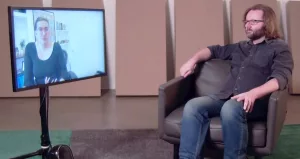James Hayes delves into the intricate relationship between architecture, technology, and the concept of making. Identifying himself primarily as an architect, Hayes emphasizes the unique perspective from which he critiques and analyzes technological advancements in architecture. Throughout his talk, he explores the notion of “translation” as a fundamental aspect of architectural processes, drawing inspiration from Robin Evans’s essay on how architectural ideas transition from drawings to physical structures.
Hayes elaborates on the multiple translations that occur within architectural practice—from sketches to digital models and from detailed plans to built environments. He critically analyzes the enthusiasm around digital fabrication technologies like 3D printing, cautioning against viewing them as straightforward, one-to-one solutions for building construction. Instead, he highlights the often overlooked complexities and the potential for “lost in translation” moments where initial designs undergo significant alterations before realization.
Addressing the educational implications, Hayes expresses concerns about architecture students who might graduate with an oversimplified understanding of building processes due to the deceptive ease of digital tools. He underscores the importance of understanding the nuances and the layered realities of architectural production, advocating for a more profound engagement with the materials, processes, and collaborative practices that define the field. Through his critique, Hayes invites a reevaluation of how emerging technologies are integrated into architectural education and practice, suggesting a more critical and nuanced approach to preparing the next generation of architects.


